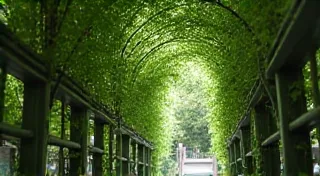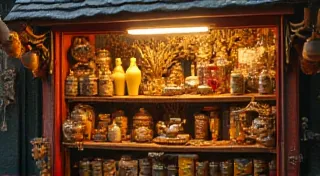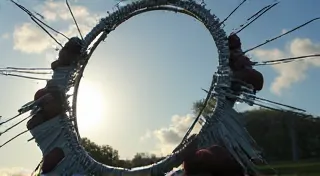From Field to Table: How Agricultural Practices Mold Regional Vernacular
There’s a particular scent that clings to old accordions, a mingling of wood, leather, and the ghosts of countless melodies played in smoke-filled dance halls. It’s a scent that speaks of history, of community, and of the quiet, persistent labor that shapes not just our landscape, but the very language we use to describe it. My grandfather, a taciturn farmer with hands like gnarled oak branches, played such an accordion. He’s gone now, but the memory of his playing, the rumble of the bellows, and the peculiar vocabulary he employed when discussing his crops are inextricably linked. That vocabulary, I’m realizing now, wasn’t just his; it was a direct consequence of the life he lived, deeply intertwined with the rhythms of the land and the specific agricultural practices of our region.
Linguistics often focuses on grand historical shifts – the Norman Conquest’s impact on English, the evolution of Indo-European languages. But the subtle, persistent influence of local agriculture on regional dialects is a fascinating, often overlooked facet of language development. Think about it: when a community’s livelihood depends on a particular crop or livestock, a unique vocabulary blossoms to describe every aspect of its cultivation, care, and processing. These aren't just technical terms; they become embedded in everyday speech, shaping metaphors, idioms, and even the general tone of conversation. Consider, too, how the movement of people and goods, the very mechanisms of the whisper of trade, have equally molded the landscapes of language, enriching and complicating regional differences.

The Seed of Vocabulary: Crops and Their Words
Consider the American South, historically dominated by cotton and tobacco cultivation. Words like “boll” (referring to the protective casing of cotton), “tobacco hornworm,” and phrases describing specific curing methods weren’t just spoken by farmers; they permeated the entire regional lexicon. Imagine trying to explain the intricate process of hanging and drying tobacco leaves to someone unfamiliar with the terminology. The need for precise communication led to the refinement and widespread adoption of specialized words. This need isn’t unique to the South; across geographies, the underlying pressures and necessities of sustaining a community through its work have always left an imprint on its language. The landscape itself, and the challenges it presents, play a significant role; one can almost feel the subtle influences of echoes in the stone shaping the dialects of those who settled near it.
Moving westward, the vast wheat fields of the Great Plains gave rise to a vocabulary centered around grain: “thresher,” “headlands,” “fallow,” and terms describing different grades of wheat. Even seemingly simple words can carry layers of meaning rooted in agricultural practices. “Yield,” for example, transcends its agricultural origin to describe the output of any endeavor. The very act of anticipating a harvest – the hopes, the anxieties – seeps into the language, coloring expressions of success and disappointment. The physical terrain, of course, plays a role as well, influencing settlement patterns and contributing to unique linguistic features. The ways in which physical obstacles and resources shape communities can profoundly affect the way they speak and understand the world.
My grandfather, growing up in a region known for its apples, didn't just speak *about* apples; he spoke *in* apples. He’s described a poor harvest as “light as a pixie’s apple,” and a particularly flavorful variety as “sweet as a cider’s dream.” These weren't just metaphors; they were a lived experience, a constant reminder of the connection between his family's well-being and the bounty of the orchard. Collecting antique accordions, like preserving these linguistic fossils, requires a similar appreciation for the details, the subtle variations in construction that speak volumes about the maker’s skill and the era’s prevailing techniques. The meticulous craft involved speaks to a deep connection between the maker and the land that provides the raw materials.
Beyond Crops: Livestock and Local Language
It's not just crops, of course. The raising of livestock has an equally profound influence. The terminology surrounding cattle, pigs, sheep, and poultry frequently becomes deeply ingrained in regional dialects. Terms like “sty,” "muckheap," and “flock” aren’t just agricultural; they're part of the cultural fabric, often appearing in idioms and metaphors unrelated to farming. The care and nurturing of animals frequently imbue the language with terms of endearment and expressions of concern. A farmer’s bond with their livestock, often a lifeline for the family, fosters a vocabulary rich in detail and emotionally charged descriptions. The impact of human migration on language is a fascinating study; consider how the flow of people can reshape dialects, creating intricate webs of influence and adaptation. The processes driving these shifts – economic opportunity, conflict, environmental change – leave indelible marks on linguistic landscapes.

The Craftsman's Influence: Accordions and Agricultural Tools
The crafting of agricultural tools and equipment also influences local dialects. Consider the terminology surrounding plows, harrows, reapers, and threshing machines. The skill and ingenuity required to build and maintain these tools gave rise to specialized vocabulary that often crossed over into everyday conversation. The repairs required, the inherent dangers, and the sense of mastery over the land all contribute to a unique linguistic landscape. The way rivers and waterways shape human movement and interaction provides a fertile ground for linguistic convergence, as people from diverse backgrounds share their words and stories. The study of how the river's murmur shapes language offers valuable insights into the dynamics of regional speech.
Interestingly, the creation of antique accordions themselves mirrors this agricultural cycle. The wood used—often sourced locally—the leather for the bellows, the metal for the reeds—all required specialized craftsmanship and contributed to a local economy. The makers of these instruments, often skilled artisans themselves, infused their creations with a sense of practicality and durability, qualities highly valued in agricultural communities. This interconnectedness highlights how seemingly disparate aspects of a culture—music, agriculture, craftsmanship—are intricately woven together.
The Slow Fade: Modernization and Linguistic Erosion
Sadly, the gradual modernization of agriculture and the rise of large-scale industrial farming practices are eroding this rich linguistic heritage. As younger generations move away from the land and adopt more standardized forms of communication, many of these specialized terms are fading into obscurity. The subtleties of regional dialects are slowly being smoothed over, a casualty of globalization and technological advancement. This trend is not limited to agricultural vocabulary; it affects all aspects of regional language as traditional ways of life are replaced by more homogenous cultural norms. Historical events, like periods of colonial rule, have also left a profound mark on language, often leading to shifts in vocabulary and grammar. The legacy of echoes of occupation can still be heard in the dialects of many regions today.
There’s a bittersweet feeling that comes with realizing the fragility of language, particularly when it’s so intimately tied to a way of life. Just as an old accordion, neglected and unplayed, can lose its voice, so too can a dialect wither and fade if not actively preserved and celebrated. The effort required to restore an accordion – carefully cleaning the wood, replacing damaged bellows, tuning the reeds – parallels the need for diligent preservation of these precious linguistic traditions. The complexities of linguistic change mean that some words and phrases disappear, while others endure, creating a rich, ever-shifting landscape of expression. The accelerating pace of technological advancement presents both challenges and opportunities for language preservation, demanding innovative approaches to documentation and revitalization.

Appreciating the Harvest of Words
Recognizing the connection between agricultural practices and regional dialects isn't just about understanding the origins of specific words; it’s about appreciating the depth and complexity of human culture. It’s about understanding how a community’s livelihood shapes its identity and how that identity is expressed through language. Next time you hear someone use a seemingly obscure term related to farming, take a moment to consider its history, its significance, and the lives of those who used it to connect with the land. Like a perfectly tuned accordion, these linguistic traditions resonate with a unique beauty and deserve our utmost respect and preservation. The preservation of regional dialects is not merely an exercise in linguistic conservation; it is a commitment to safeguarding the cultural heritage of communities across the globe, honoring the unique voices and perspectives that enrich the tapestry of human experience. As technology continues to reshape our world, the preservation of these cultural treasures becomes even more vital. The impact of innovation, while often presented as uniformly positive, can also contribute to the erosion of traditional practices and languages, underscoring the importance of proactive measures to protect linguistic diversity.





